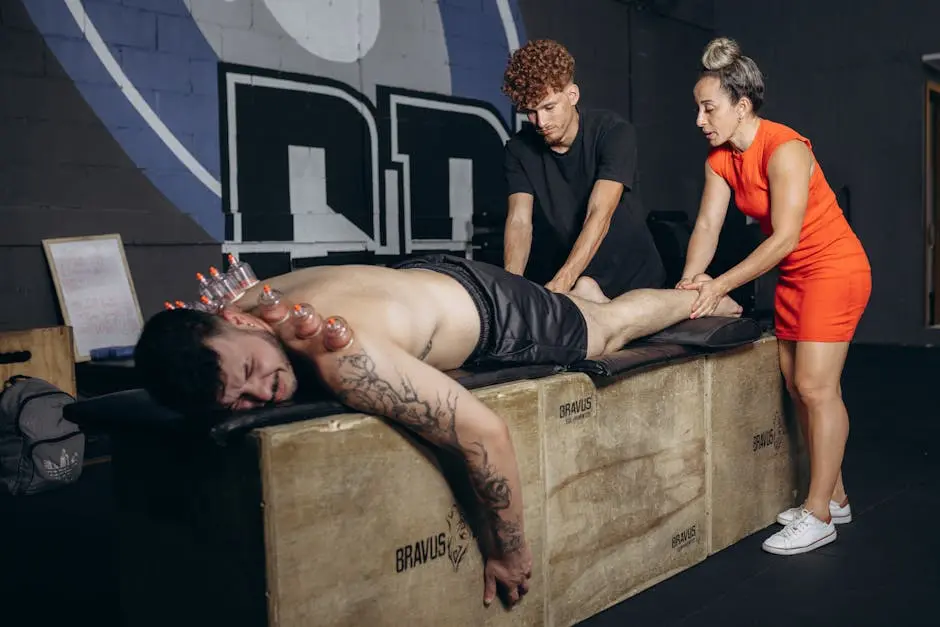The Activator Technique is a gentle chiropractic method that uses a handheld device to deliver quick impulses to the spine. This blog explores its potential benefits in post-surgery rehabilitation, answering common questions and providing insights.
Understanding the Activator Technique
Learn about the principles behind the Activator Technique and how it works.
At its core, the Activator Technique emphasizes holistic health. By focusing on the body’s natural healing processes, this method seeks to restore balance and function without the need for invasive procedures.
The device utilized in this technique delivers precise, low-force thrusts to the spine, effectively addressing misalignments. This precise approach minimizes discomfort and maximizes effectiveness, making it especially appealing for those in recovery.
Many patients find that the Activator Technique does not involve the same level of physical manipulation as traditional chiropractic methods. Instead, patients can expect a more gentle experience, suited for those who may be sensitive post-surgery.
Benefits of the Activator Technique in Rehabilitation
Explore how this technique may aid in healing, pain relief, and enhancing mobility after surgery.
One major benefit of the Activator Technique is its ability to reduce pain. Many patients report significant relief, which can be critical during the often uncomfortable post-surgical recovery phase.
Not only does the Activator Technique address pain, but it also promotes healing. By stimulating the nervous system, it enhances communication between the body and the brain, which is vital for effective recovery.
Additionally, patients frequently notice an increase in mobility after incorporating the Activator Technique into their rehabilitation plan. This can be essential for regaining independence and returning to everyday activities.
Overall, utilizing the Activator Technique provides a comprehensive approach to post-surgery rehabilitation, addressing multiple aspects of recovery in a single method.
Research and Evidence Supporting Its Use
Review current studies and findings regarding the effectiveness of the Activator Technique in post-surgical recovery.
While the Activator Technique is still being explored in clinical settings, a growing body of research suggests that it can significantly benefit patients recovering from surgery. Various studies indicate improved recovery rates among those who incorporate this technique into their rehabilitation.
Research indicates that patients experience a faster return to normal activities, attributed to enhanced pain management and improved spinal alignment. These findings emphasize the importance of exploring all available options for recovery.
It’s encouraging to see that academic institutions are increasingly interested in studying the effectiveness of techniques like the Activator. The more evidence we gather, the better we can tailor rehabilitation plans to fit individual needs.
Consulting with Your Healthcare Provider
Understand the importance of discussing this technique with your medical team to ensure a safe and effective rehabilitation plan.
Before beginning any new treatment method, including the Activator Technique, it’s important to have a comprehensive discussion with your healthcare provider. They can evaluate your specific situation and determine if this technique aligns with your needs.
Your medical team can offer valuable insights into how the Activator Technique could fit into your rehabilitation plan. They may even provide recommendations based on your surgery type and unique recovery goals.
Always approach post-surgery rehabilitation with an open mind and a willingness to ask questions. Collaboration with your healthcare provider ensures that your recovery is as smooth and effective as possible.
Personal Experiences and Testimonials
Read stories from individuals who have undergone post-surgery rehabilitation using the Activator Technique.
Hearing from others can provide hope and insight. Many patients praise the Activator Technique for its gentle nature and effectiveness in alleviating post-surgery discomfort.
One individual shared that they experienced a significant reduction in pain after just a few sessions, allowing them to regain their mobility far sooner than expected. Their story is a testament to how personalized rehabilitation can yield positive outcomes.
Another testimonial highlights the technique’s role in enhancing their overall sense of wellbeing post-surgery. Patients often express gratitude for discovering this alternative approach, emphasizing its gentle touch and its immediate impact.
These personal experiences underscore the importance of exploring various rehabilitation options and finding what works best for you, bringing light to the transformative power of the Activator Technique.
Final Thoughts
In summary, the Activator Technique can be a valuable addition to post-surgery rehabilitation, promoting recovery and reducing pain. Always consult with healthcare professionals to tailor rehabilitation methods to individual needs.





